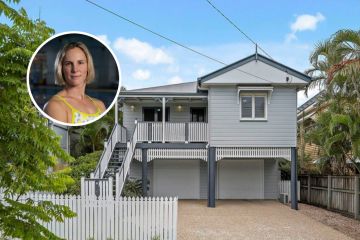'Really great projects move us; they affect us deeply': The features of a great building
On a busy road near Bronte beach in Sydney’s east is a bungalow that started life as an unremarkable early 20th-century house.
Add the creative flair of two of Australia’s leading designers, whose dramatic re-imagining of the residence included slicing a hole in the roof to create a spacious private courtyard with a roof-skimming frangipani tree, and an extraordinary family home was born.
The question, “What makes a building truly great?” was one of the themes of the Sydney Architecture Festival, which finished this week.
In cities where streetscapes are shaped by structures from different eras, when different tastes and techniques prevailed, which homes stand the test of time?
The Hole in the Roof House – a winner at the 2018 Houses Awards – is Rachel Neeson and Stephen Neille’s family home.
The jury praised the couple, design directors at Neeson Murcutt Architects, for transforming a bland house into a domestic sanctuary in which the courtyard, paired with the indoor living area, became “the heart of the dwelling, creating a quiet, peaceful focus while inviting light into the centre and enabling cross-breezes without the loss of privacy”.
For Neeson and Neille, exceptional projects are imbued with a clear idea about how people will live between – and beyond – the walls. Ideally, the spaces should be adaptable enough to accommodate the ebb and flow of family life.
“For me, those great houses are the ones that allow for changing family needs,” Neeson says. “The layout might be such that a room can be a bedroom or a second living room. It has multiple uses, so the house feels rich.”
- Related: Inside a no-expenses-spared renovation in Toorak
- Related: The South Yarra house so subtle it’s almost shy
- Related: The incredible renovation of a terrace built in 1872
Another essential ingredient is ensuring the design responds to the setting. It’s one thing to toy with the concept of a dream home in the way one might fantasise about spending lotto winnings, it’s quite another for an architect to inspect a site and draw up plans that suit the client’s lifestyle and budget.
Asked to nominate some of their favourite architects, Neeson and Neille traverse centuries and continents, from Venetian architect Andrea Palladio’s classical buildings in Italy to the courtyard houses of Ludwig Mies van der Rohe, the German-American godfather of modernism.
More recently, Charles Correa’s innovative low-rise apartments in India caught their eye. Homes by Australian architects Peter Stutchbury and Jon Jacka also impressed.
With such wide-ranging tastes, Neille is reluctant to single out any one era as the best for home design.
“It’s a little bit like poetry or physics,” Neille says.
“I don’t think any era is inherently better than any other. Great projects have clarity of idea, a richness of content and an appropriateness of form. Really great projects move us; they affect us deeply.”
It’s no accident that many critically acclaimed homes were designed by architects as their own residences or homes for close family or friends. Unshackled from convention, these projects often pushed the boundaries of the possible.
The American architect John Lautner’s Schaffer Residence, built in 1949 for the mother of one of his employees, had a starring role alongside Colin Firth in Tom Ford’s celebrated 2009 film A Single Man.
Sydney architect Virginia Kerridge cites Eva and Hugh Buhrich’s home in Castlecrag, completed in 1972, as one of Australia’s finest modernist houses.
Like Neeson and Neille, she has broad tastes, however, she is prepared to name and shame the 1980s as particularly underwhelming.
“Things were built too quickly, with too little consideration,” Kerridge says.
The architect, whose recent projects include the luxury beachfront M3565 apartments on Main Beach on the Gold Coast, says the elements of excellence can be difficult to pin down.
“One thing they all have in common is a combination of mindfulness, being completely right for the location and a poetry that’s hard to define.”
For today’s new builds, there’s growing awareness of the importance of sustainability, from the origins of materials to construction techniques and how the home will function when it’s occupied.
Kerridge would like to see a greater focus on landscaping, potentially through planning guidelines, to encourage more verdant streetscapes.
Regarding homes in the context of how they contribute to suburbs is a theme Brisbane architect Stuart Vokes, director of Vokes and Peters, explores in his residential projects.
“Maybe what makes a house great is recognising it’s a critical component of city making,” Vokes says.
Against a backdrop of a seemingly relentless pursuit of higher densities in Australia’s big cities, Vokes cautions against underestimating the value of suburbia, with backyards big enough to play cricket in and front gardens that spark conversations with neighbours. “If we squander suburbia, we rapidly destroy our cities.”
Auchenflower House in Brisbane, a cautious but considered recreation of an inter-war Queenslander by Vokes and Peters, won a gong at the 2017 Houses Awards. The alteration and addition preserves the language of the original building, while creating new ways for the occupants to engage with the outdoors and the neighbourhood.
“There’s something beautiful about an open and generous house,” Vokes says. “If it was replicated up and down the street and throughout the suburb, imagine what sort of a neighbourhood you could make.”
We recommend
We thought you might like
States
Capital Cities
Capital Cities - Rentals
Popular Areas
Allhomes
More







